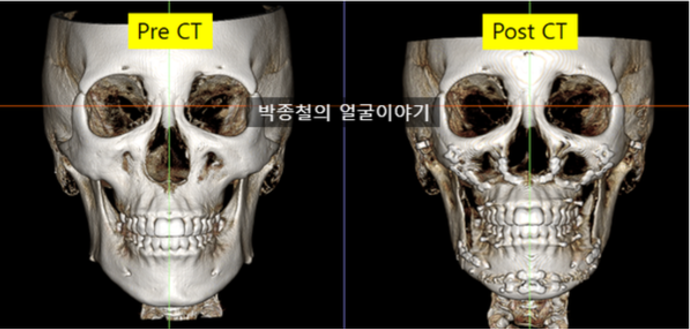Ensuring Successful Orthognathic Surgery: A Guide to Minimizing Risks and Achieving Optimal Outcomes
- Dr. Park

- Dec 4, 2024
- 2 min read
Orthognathic surgery, a complex procedure involving the repositioning of facial bones, can be life-changing. However, it's natural to be concerned about potential complications. While advancements in medical technology have significantly improved the safety of this procedure, minimizing risks requires meticulous planning, execution, and verification. This article outlines key factors to consider when contemplating orthognathic surgery.

The Evolution of Orthognathic Surgery: Embracing 3D Technology
3D virtual surgical planning (VSP) has revolutionized orthognathic surgery. By utilizing 3D imaging and simulation, surgeons can pre-plan bone movements, enhancing precision and predictability. However, it's crucial to understand that simulations cannot perfectly replicate real-world surgical conditions. Subtle variations during surgery can influence the final outcome.

Patient-Specific Implants in 3D Orthognathic Surgery The Importance of Patient-Specific Implants in 3D Orthognathic Surgery: While 3D VSP provides a roadmap, patient-specific implants (PSIs) ensure its accurate execution. In orthognathic surgery, wafers are commonly used to guide jaw alignment. However, wafers alone may not guarantee optimal results due to potential discrepancies between the wafer and actual tooth position. These minor deviations can magnify during bone repositioning, leading to significant inaccuracies.
PSIs, custom-made to match the patient's unique anatomy, address this challenge. These plates facilitate precise bone fixation during surgery, minimizing the inaccuracies that may arise from wafer-based guidance. By pre-drilling holes in the bone and using PSIs for accurate fixation, surgeons can ensure the surgical plan is faithfully replicated.

3D virtual surgical planning (VSP) Post-Operative Verification - Ensuring Accuracy: Even with PSIs, minor discrepancies can occur. Therefore, post-operative verification is critical. This involves comparing the surgical plan with the actual outcome using 3D imaging, including CT scans and STL (Stereolithography) files. This rigorous assessment allows for objective evaluation of surgical accuracy and enables prompt intervention if necessary.

post-operative verification 
comparing the surgical plan with the actual outcome using 3D imaging
Minimizing Risks: A Checklist for Patients
3D Planning and PSIs: Opt for surgeons who utilize 3D VSP and PSIs for both jaws.
Post-Operative 3D Verification: Ensure the surgical team employs a robust 3D verification system.
Experienced Surgeon: Choose a board-certified oral and maxillofacial surgeon with extensive experience in orthognathic surgery.
Thorough Consultation: Engage in comprehensive discussions to understand the surgical process, potential risks, and benefits.
The Indispensable Role of an Experienced Surgeon
Technology and techniques are only as effective as the surgeon wielding them. An experienced surgeon possesses the expertise to navigate unforeseen challenges during surgery and make informed decisions to ensure optimal outcomes.
Orthognathic surgery is a significant decision. By using this checklist and selecting a qualified surgeon, you can increase the likelihood of a safe and successful outcome.

Ensuring Successful Orthognathic Surgery



Comments